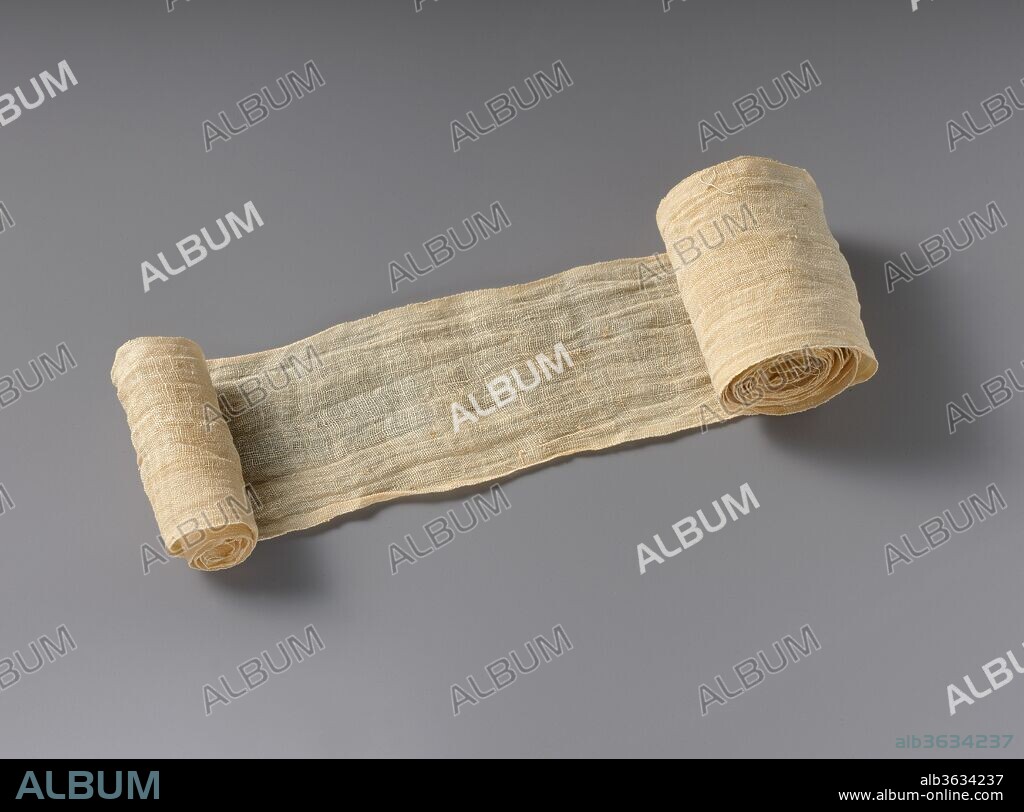alb3634237
Mummy Bandage from Tutankhamun's Embalming Cache

|
Add to another lightbox |
|
Add to another lightbox |



Buy this image.
Select the use:

Title:
Mummy Bandage from Tutankhamun's Embalming Cache
Caption:
Mummy Bandage from Tutankhamun's Embalming Cache. Dimensions: L. 165 cm (64 15/16 in.); W. 6 cm (2 3/8 in.). Dynasty: Dynasty 18. Reign: reign of Tutankhamun. Date: ca. 1336-1327 B.C..
In December 1907 Theodore M. Davis, a wealthy American who was funding excavations in the Valley of the Kings, discovered a small pit near the tomb of Seti I. Inside the pit were approximately a dozen large sealed whitewashed storage jars (09.184.1). Among other things, the jars contained bags of natron (a kind of salt), pieces of linen with hieratic inscriptions dated to Years 6 and 8 of a king named Tutankhamun (throne name Nebkheperure). At the time, almost nothing was know about Tutankhamun, and Davis declared that he had discovered the king's tomb.
Davis received a number of the jars and their contents in the division of finds and, in 1909, he gave most of his share to the Metropolitan Museum. It was only later that Herbert Winlock, the field director of the Museum's excavations at Thebes, realized that the natron and linen were embalming refuse from the mummification of Tutankhamun.
In ancient Egypt, linen was a valuable commodity used for clothing, bedding, blankets, cushions and other purposes. when it became too worn to be used by the living, it was put asside and used for mummification. In general, the bandages used to wrap a mummy were torn from old old linen sheets, but a number of the bandages from Tutankhamun's embalming cache, including this one that has a selvedge edge on both sides, were specially woven for this purpose.
Technique/material:
linen
Period:
NEW KINGDOM
Museum:
Metropolitan Museum of Art, New York, USA
Credit:
Album / Metropolitan Museum of Art, NY
Releases:
Model: No - Property: No
Rights questions?
Rights questions?
Image size:
4400 x 3263 px | 41.1 MB
Print size:
37.3 x 27.6 cm | 14.7 x 10.9 in (300 dpi)
 Pinterest
Pinterest Twitter
Twitter Facebook
Facebook Copy link
Copy link Email
Email
